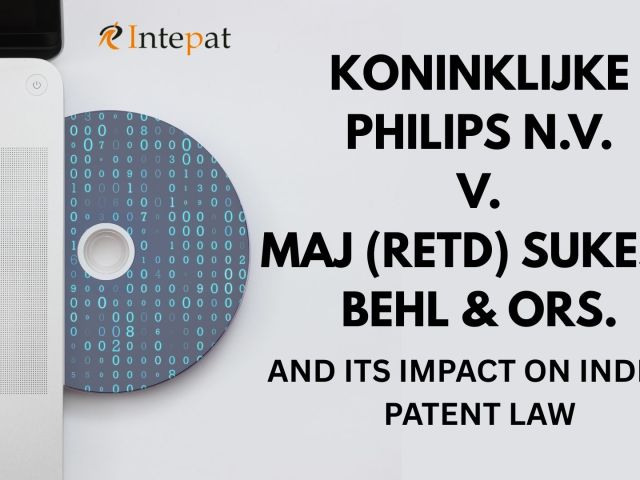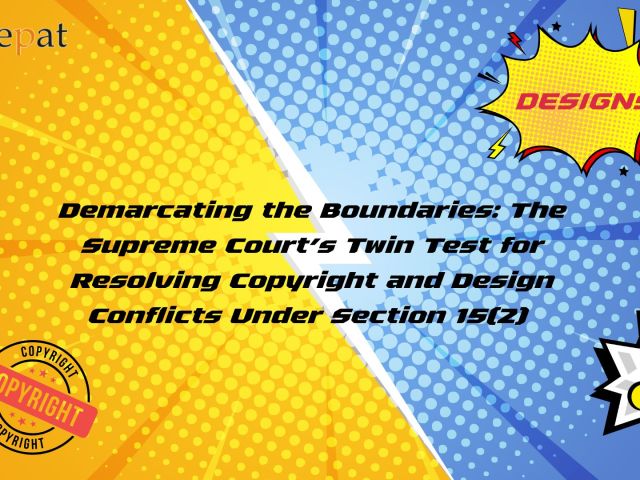The High Court of Delhi’s recent ruling in AbbVie Biotherapeutics Inc & Anr. v. Assistant Controller of Patent Designs [C.A.(COMM.IPD-PAT) 44/2023] addresses a critical aspect of Indian patent law: the permissible scope of amendments to patent applications. This case originated from an appeal filed under Section 117A of the Patents Act, 1970, against an order dated July 31, 2023, issued by the Assistant Controller of Patents and Designs. The core issue revolves around the Controller’s decision to refuse Indian Patent Application No. 201817047767, titled “ANTI-cMet ANTIBODY DRUG CONJUGATES AND METHODS FOR THEIR USE.”
This case delves into the intricacies of patent law concerning amendments and their limitations, offering valuable insights into the judicial interpretation of Section 59(1) and its implications for patent applicants in India. This case highlights the judiciary’s firm stance against attempts to broaden the scope of patent protection beyond the initial disclosure through amendments, specifically focusing on the interpretation and application of Section 59(1) of the Act.
I. Background: The Patent Application and the Controller’s Decision
AbbVie Biotherapeutics Inc. and AbbVie Inc., the appellants, are biopharmaceutical companies. They filed a patent application in India, bearing application number 201817047767, which was related to “ANTI-cMet ANTIBODY DRUG CONJUGATES AND METHODS FOR THEIR USE.” This application was filed on December 17, 2018, as a national phase application originating from a Patent Cooperation Treaty (PCT) application (PCT/US2017/033176) with a priority date of May 17, 2017, based on a US Patent application (US 62/337,796) dated May 17, 2016.
The Indian Patent Office’s Assistant Controller of Patents and Designs rejected AbbVie’s patent application, leading to the appeal before the High Court. The Controller’s decision, issued on July 31, 2023, cited violations of sections 2(1)(j), 3(i), and 59(1) of the Patents Act, 1970, as the grounds for refusal.
II. The Bone of Contention: Proposed Amendments to the Patent Claims
The crux of the dispute lay in the amendments AbbVie proposed to the claims of their patent application. The original claims within the patent application, as filed, were primarily directed towards methods of treatment, specifically focusing on the use of anti-cMet antibody-drug conjugates (ADCs) for treating cMet-overexpressing cancers. These claims included specific details regarding dosing regimens, frequency of administration, targeted patient populations, and combination therapies.
However, in response to objections raised in the First Examination Report (FER), AbbVie submitted amended claims. These amended claims shifted the focus from methods of treatment to product claims, seeking protection for the anti-cMet antibody-drug conjugates (ADCs) and compositions thereof, independent of any specific therapeutic use. This transformation from method-of-treatment claims to product claims was the central issue the court had to consider.
III. Legal Framework: Section 59(1) of the Patents Act, 1970
The court’s decision heavily relied on the interpretation of Section 59(1) of the Patents Act, 1970. This section governs the permissible amendments to a patent application or specification and imposes strict limitations.
Section 59(1) explicitly states that amendments must be limited to disclaimers, corrections, or explanations. Crucially, it prohibits any amendment that would result in the amended specification claiming or describing matter not originally disclosed or that would cause the amended claims to fall outside the scope of the original claims.
IV. The Court’s Analysis and Reasoning
Justice Amit Bansal meticulously analyzed the original claims and the proposed amendments to determine their compliance with Section 59(1). The court observed the fundamental shift in claim type, from method-of-treatment claims to product claims, and its potential impact on the scope of protection.
The court found that the original claims were indeed limited to methods of treating specific cancers, particularly Non-Small Cell Lung Cancer (NSCLC). In contrast, the amended claims sought to protect the anti-cMet antibody-drug conjugates (ADCs) themselves, without the limitation of any specific therapeutic use.
This difference, the court reasoned, constituted a broadening of the scope of the claims. The amended claims would confer protection on the compounds regardless of their use, whereas the original claims only protected the compounds when used in a specific method of treatment.
The court also addressed AbbVie’s argument that the amended claims were supported by the original specification. While acknowledging that the specification might have described the compounds, the court emphasized that the original claims focused solely on their therapeutic use, not on the compounds per se. Therefore, claiming the compounds independently in the amended claims was considered an expansion beyond the original disclosure.
Furthermore, the court dismissed the argument that the amendments were permissible as a “disclaimer,” “correction,” or “explanation” under Section 59(1). The court reasoned that the amendments went far beyond simply clarifying or narrowing the original claims; they fundamentally altered the nature of the claimed invention.
In further support of its decision, the court referenced the Supreme Court’s judgment in Novartis AG v. Union of India, which cautioned against artificially broadening patent claims.
The court also distinguished the present case from Allergan Inc. v. Controller of Patents, a case cited by the appellant. In Allergan, the amended claims still related to the same disease as the original claims, whereas in the present case, the amended claims removed the disease-specific limitation.
Finally, the court upheld the Controller’s finding that the original claims were directed to a method of treatment, which is excluded from patentability under Section 3(i) of the Patents Act, 1970 and did not satisfy the industrial applicability requirement under Section 2(1)(j) of the Act.
V. Decision and Implications
Based on its analysis, the High Court concluded that the proposed amendments by AbbVie contravened Section 59(1) of the Patents Act, 1970, as they broadened the scope of the original claims. Consequently, the court upheld the Controller’s decision to refuse the patent application.
This decision reinforces several important principles within Indian patent law:
- Strict Interpretation of Section 59(1): The judgment emphasizes the strict interpretation of Section 59(1) and the limited scope for amending patent applications.
- Prohibition of Scope Broadening: It clearly establishes that amendments cannot be used to expand the scope of patent protection beyond what was originally disclosed in the specification and claims.
- Clarity in Patent Drafting: The case underscores the need for precise and comprehensive drafting of patent applications from the outset. Applicants must carefully consider the full scope of their intended protection and ensure that the claims accurately reflect the invention.
- Upholding Patent System Integrity: The ruling demonstrates the Indian judiciary’s commitment to maintaining the integrity of the patent system by preventing applicants from securing overly broad protection through strategic amendments.
CONCLUSION
In conclusion, the High Court of Delhi’s judgment firmly upholds the decision of the Assistant Controller of Patents and Designs to refuse AbbVie’s patent application. The court, after careful examination of the facts and legal arguments, found no merit in the appeal filed by AbbVie. This ruling reaffirms the significance of adhering to the stringent requirements of Section 59(1) of the Patents Act, 1970, which governs the amendment of patent applications. The court’s decision underscores the principle that amendments cannot be used to expand the scope of a patent beyond its initial disclosure. It also reiterates the court’s role in safeguarding the integrity of the patent system by preventing applicants from unduly broadening their patent claims through amendments. Furthermore, the court directed the Registry to provide a copy of the order to the Office of the Controller General of Patents, Designs and Trade Marks for compliance, ensuring that the implications of this decision are effectively communicated and implemented within the patent administration framework.
Written by Medha, Legal Intern at Intepat IP




